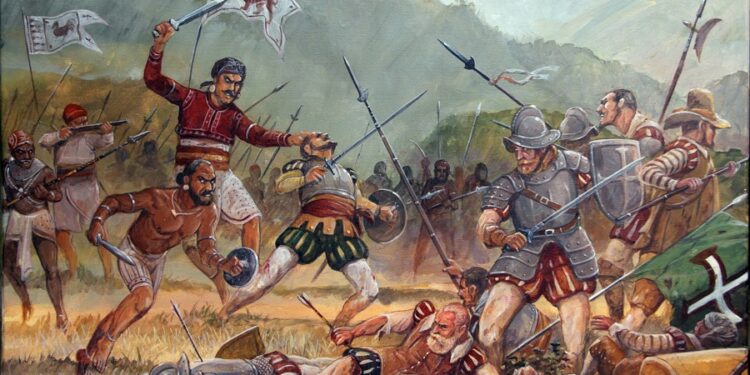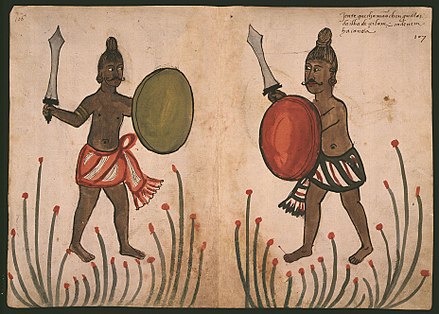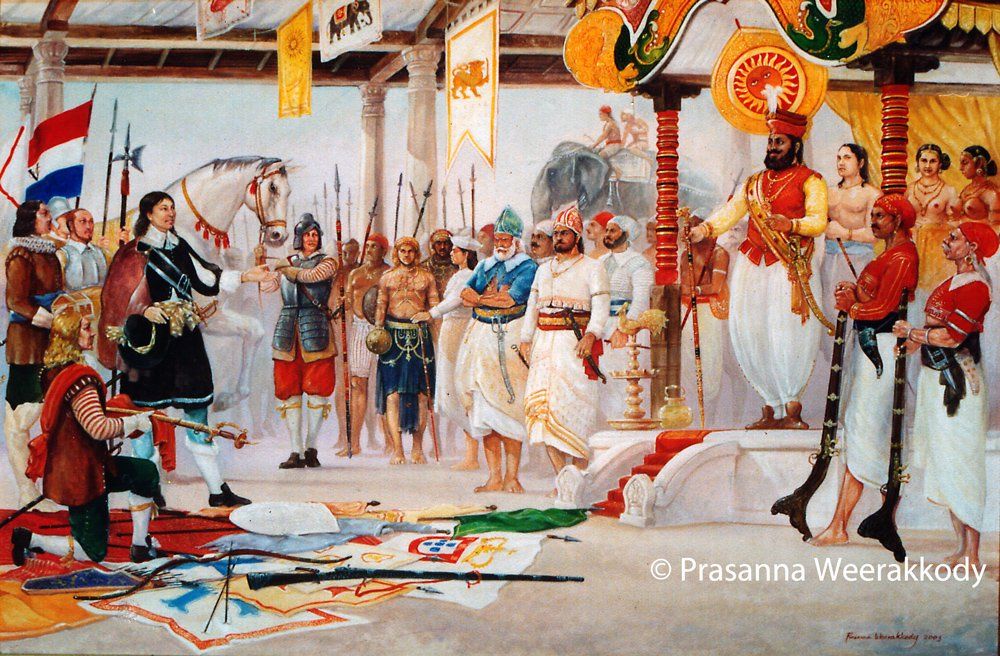Kandyan peasant armies kept Europeans at bay for two centuries
Posted on November 26th, 2021
By P.K.Balachandran/Daily Mirror Courtesy NewsIn.Asia

The Kandyan Kingdom’s dogged resistance to European invaders from the 17 th. Century to the second decade of the 19 th., Century has not received the attention it deserves from military historians, laments historian Dr. Channa Wickremesekera, the author of Kandy at War: Indigenous Military Resistance to European Expansion in Sri Lanka 1594-1818”
Kandy was but a small, landlocked, sparsely populated place in central Sri Lanka surviving on subsistence agriculture and without any other material resources. But it had kept at bay, and inflicted heavy casualties on, better armed and trained Portuguese, Dutch and British forces for two centuries. This is unique in the annals of warfare, Wickremesekera asserts.
The Kandyan ‘army’ was not a standing army but only a temporary collection of peasants coming together for the limited purpose of facing a particular invasion or conducting a particular offensive. Local chiefs and village headmen gathered men under the Rajakariya system (service obligation to the King). The motivating factors were: loyalty or submission to the King or the local chief, Sinhala pride, land grants, awards and also opportunities to plunder and loot.
The men carried a wide assortment of weapons including swords, knives, pikes, spears, bows and arrows, clubs and rocks, muskets, Gingals (large muskets fired from a rest) and light artillery. However, only a section of the armed men carried firearms. This was so in the Portuguese and Dutch armies too. Pikes and spears played a major role in the fighting in Balana in 1594. Constantine de Sa Norohna’s army in 1630 fought with spears. The Kandyan and Portuguese firearms were similar.
However, weaponry was not a critical factor for the Kandyans because they rarely faced the enemy head-on. They opted for guerilla warfare which suited their terrain. Kandy town had been occupied several times by European armies but they could never stay there for long. Typically, the King would evacuate the town and retreat to the countryside and organize guerilla strikes, with the full participation of the people. They would let the heat and rain, tropical diseases and fevers debilitate the invader, especially the Whites. And when the latter withdrew in desperation, the guerillas, hiding in the jungle, would ambush them on the narrow hill-side pathways. Several European armies had been annihilated in this way.
According to Wickremeskera, three large Portuguese armies were completely destroyed and one was badly mauled. Nearly 2000 Portuguese troops were captured or killed. Dutch attempts to invade in 1764 and 1765, were repulsed inflicting heavy losses. In 1803-1804, the British made two attempts to seize Kandy. One of the British contingents was trapped in Kandy and massacred, and the other escaped with heavy losses. The guerillas put obstructions and batteries with Gingals on the pathways to ambush the enemy trapped in the narrow pathways.
Portuguese
The first notable success against the Portuguese was the rout of the army headed by Captain General Pedro Lopes de Souza in 1594. When he was returning to Colombo from Kandy after an unsuccessful attempt to put Dona Catherina (formerly Kusumasana Devi) on the throne, the Kandyans killed him and many of his troops. With this, Konappu Bandara who took the name Vimala Dharma Surya I, got back his throne. A force under Dom Janome de Azevedo was sent to punish Vimala Dharma Suriya I. It narrowly escaped annihilation. Thereafter the Portuguese gave up the idea of occupying Kandy and took to raiding, ravaging and burning its territories. However, in 1630, Capt.Gen.Constantine de Sa Norohna invaded Kandy, but his army was annihilated in Uva. In 1638, an army under Diogo de Mello de Castro, was annihilated outside Kandy.

Dutch
In 1638, the Kandyans struck an alliance with the Dutch to get rid of the Portuguese. The Dutch drove out the Portuguese in 1658, but they did not hand over the sea ports to Kandy as promised. Land-locked Kandy desperately needed access to these ports. It needed to import essentials like salt, cloth and Indian mercenaries the Europeans were liberally recruiting. In 1670 and 1675, King Rajasinha II launched offensives against the Dutch and inflicted losses, but failed to get the ports. In 1765, the Dutch under Baron Van Eck attacked Kandy and occupied it but harassed by the Kandyans, they withdrew
British
The British, who took over from the Dutch in 1795-96, and like their European predecessors, eyed Kandy. In 1803, the British sent 3,400 troops to Kandy to place a puppet, Muttusamy, on the throne in place of the unbending Sri Vikrama Rajasinha. British troops succeeded in doing so, but the Kandyans attacked the British detachment and annihilated it. Eventually, the British exploited the political divisions in Kandy and got disgruntled local nobles to collaborate and hand over the kingdom to them on a platter in 1815. But in 1818, when there was a serious revolt in Uva, the British took no chances. Governor Brownrigg moved to Kandy, and with reinforcements from India, unleashed a reign of terror, virtually depopulating Uva to stamp out Kandyan dreams of independence.
Kandyan Army
The Kandyan soldier was a peasant who brought his own weapons, and learnt to fight on the job. The army also had local Malays and Kaffirs (Africans) and also Indians like Malabars, Tamils, Telugus, and Canarese (Karnatakas). There was also an assortment of European deserters and prisoners. These mercenaries also served in the armies of European powers.

Being locals, the Kandyan soldiers carried very little rations (usually rice and kurakkan or millet) when on campaigns which never lasted more than two weeks. They also had access to local resources. At any rate they never went too far from their villages. When food stocks were over, they would get back to their villages for replenishment. In contrast, the invading European armies had to collect provisions from their bases on the coast, and transport them using carts, pack animals and coolies. Camp followers could at times be more than the fighting men. Each European officer would have a number of attendants. Top officers even took their furniture on campaigns. But the porters were very vulnerable to Kandyan guerilla attacks and would often abandon their carts and run. This would create a shortage of food, especially meat, and that would seriously affect the Europeans.
Starvation, leech bites, diseases and fevers typical of tropical jungles, were common among the Europeans and their men. Deaths and diseases badly affected the fighting strength and fighting capability of invading foreign troops. A fifth of the British troops died of disease in the 1818 Uva campaign. In the 17 th.Foot the death toll was 410 out of 1000.
However, the Kandyans were over-run eventually. Technological backwards, the subsistence economy, outdated military techniques and lack of access to outside (Indian) manpower, and lack of material resources, led to a weakening of morale. The Dutch and the British in the second half of the 18 th. and early 19 th.Century had cannons and mortars, which could take on the Kandyans from a distance. Their firearms could lay down heavier and more frequent volleys. Furthermore, the Europeans were able to bring mercenaries from India.
While both sides indulged in unspeakable brutalities, the wanton devastation inflicted on the land and the subsistence economy every time the Europeans invaded, broke the will of the Kandyan peasant fighters. The Kandyan subsistence economy was no match to the economic strength of the British Empire, Wickremesekera points out.
In a surrealistic denouement, the brave Kandyans submitted to the British meekly after some of their top chiefs handed over the Kingdom to the British on a platter in March 1815 only to get rid of King Sri Vikrama Rajasinha.